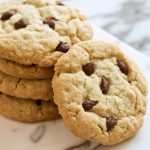Banana bread is a beloved treat that has gained immense popularity over the years. This moist and flavorful loaf has become a staple in many households, and its versatility makes it suitable for various occasions. While it may seem indulgent, the question of whether banana bread is healthy often arises. Let’s explore the history and popularity of banana bread, as well as the key ingredients that make up this delightful delicacy.

The History and Popularity of Banana Bread
Banana bread has a rich history that dates back to the Great Depression era. During this time, resourceful cooks were looking for ways to use overripe bananas that would otherwise go to waste. By incorporating these bananas into a sweet bread recipe, they created a delicious and economical treat. The popularity of banana bread continued to grow, and it became a go-to option for using up ripe bananas.
Today, banana bread is enjoyed by people of all ages and is a timeless comfort food. Its popularity can be attributed to the fact that it is relatively easy to make, requires simple ingredients, and can be customized with various add-ins like nuts, chocolate chips, or cinnamon. Additionally, the natural sweetness of bananas adds to the appeal, making it a guilt-free indulgence for many.
Nutritional Profile of Banana Bread
Banana bread, with its moist and flavorful taste, is a beloved treat for many. But is it healthy? Let’s take a closer look at the nutritional profile of banana bread to find out.
Calories and Macronutrient Composition
Banana bread typically contains a moderate amount of calories. The exact calorie content may vary depending on the recipe and serving size. On average, a slice of banana bread can provide around 200-300 calories.
In terms of macronutrients, banana bread is primarily composed of carbohydrates, with a smaller amount of fat and protein. The carbohydrates come from the flour and the natural sugars present in the ripe bananas. It’s important to note that the type of flour used can impact the glycemic index and overall nutritional value of the bread. Opting for whole wheat flour instead of refined flour can increase the fiber content and provide more beneficial nutrients.
The fat content in banana bread usually comes from added oil or butter. While fat is an essential nutrient, it’s important to consume it in moderation. Some recipes may substitute part of the fat with applesauce or yogurt to reduce the overall fat content.
Protein is a minor component of banana bread, mainly derived from sources like eggs or nuts (if included). While the protein content is not high, it still contributes to the overall nutritional value of the bread.
Vitamins and Minerals in Banana Bread
Banana bread can provide several essential vitamins and minerals, thanks to its key ingredients. Ripe bananas, the star ingredient, are a great source of potassium, vitamin C, and dietary fiber. Potassium plays a crucial role in maintaining healthy blood pressure and muscle function. Vitamin C is an antioxidant that supports the immune system and helps with the absorption of iron. Dietary fiber promotes digestive health and helps maintain satiety.
Other ingredients in banana bread, such as eggs, can contribute to the vitamin and mineral content as well. Eggs are a source of vitamins A, D, E, and B vitamins, as well as minerals like phosphorus and selenium.
Overall, while banana bread may not be as nutrient-dense as fresh fruits or vegetables, it does offer some nutritional benefits. It’s important to consider the portion size and ingredients used when assessing its healthiness. Opting for recipes with whole wheat flour, natural sweeteners, and minimal added fats can make banana bread a healthier choice. Additionally, enjoying it in moderation as part of a balanced diet allows for the occasional indulgence without compromising overall health.
Health Benefits of Banana Bread
Promotes Heart Health
Banana bread, despite being a treat, can offer some health benefits. One of the key advantages is its potential to promote heart health. The ripe bananas used in banana bread are a rich source of potassium, a mineral that plays a vital role in maintaining healthy blood pressure levels. Adequate potassium intake is known to reduce the risk of high blood pressure and cardiovascular diseases. By incorporating banana bread into your diet, you can contribute to your daily potassium intake and support heart health.
Boosts Digestive Health
Another benefit of indulging in banana bread is its positive impact on digestive health. Ripe bananas, the main ingredient in banana bread, are abundant in dietary fiber. Fiber is essential for maintaining a healthy digestive system, as it helps promote regular bowel movements and prevents constipation. Additionally, fiber can contribute to a feeling of fullness, aiding in portion control and weight management. When opting for banana bread recipes, consider using whole wheat flour, as it further increases the fiber content, adding to the digestive benefits.
While banana bread does offer these advantages, it’s important to consider certain factors to ensure its nutritional value. Pay attention to portion sizes, as indulging in large amounts can lead to excessive calorie intake. Moreover, choose recipes that include natural sweeteners rather than refined sugars and minimal added fats. These modifications can enhance the overall healthiness of banana bread, making it a guilt-free treat.
In conclusion, banana bread, when prepared with the right ingredients and consumed in moderation, can provide health benefits. The potassium content in ripe bananas promotes heart health, while the dietary fiber aids in digestion. By selecting whole wheat flour and reducing added fats and sugars, you can increase the nutritional value of banana bread. Enjoying it as part of a balanced diet allows you to savor this delicious treat without compromising your overall health.
Potential Downsides of Banana Bread
High sugar content
While banana bread does offer some health benefits, it’s important to be aware of its potential downsides. One of the major concerns is its high sugar content. Most traditional banana bread recipes call for added sugars like refined white sugar or brown sugar. These sugars not only add calories but can also contribute to negative health effects such as weight gain, increased risk of type 2 diabetes, and dental issues. It is important to consume banana bread in moderation and opt for recipes that use natural sweeteners like honey, maple syrup, or mashed bananas to reduce the overall sugar content.
Calorie-dense
Another potential downside of banana bread is its calorie density. Banana bread recipes typically contain ingredients like flour, oil or butter, and eggs, which can contribute to the overall calorie count. Consuming excessive calories without considering portion sizes can lead to weight gain and other related health issues. It’s essential to be mindful of your portion sizes and consider balancing it with other nutritious foods in order to maintain a healthy weight.
Although banana bread does have its potential downsides, there are ways to make it a healthier option. Consider the following tips:
- Use whole wheat flour: Whole wheat flour provides more fiber and nutrients compared to refined white flour, making it a better choice for improving the nutritional value of banana bread.
- Reduce added fats: Instead of using excessive oil or butter, try substituting with healthier alternatives such as mashed bananas, unsweetened applesauce, or Greek yogurt. This can help decrease the overall calorie count and saturated fat content.
- Enhance with nutritious add-ins: Consider adding healthy ingredients like nuts, seeds, or dried fruit to boost the nutritional content of your banana bread. These additions can provide extra fiber, healthy fats, and essential vitamins and minerals.
In conclusion, while banana bread can offer health benefits such as promoting heart health and supporting digestive health, it’s important to be mindful of its potential downsides. The high sugar content and calorie density should be considered when consuming this treat. By making modifications to reduce added sugars, using whole wheat flour, and controlling portion sizes, you can indulge in a healthier version of banana bread as part of a balanced diet.
Related Recipes
Here are some bread recipes you might like:
Tips for Making Healthier Banana Bread
Replacing refined flour with whole wheat flour
One way to make banana bread healthier is by replacing refined flour with whole wheat flour. Whole wheat flour contains more fiber and nutrients compared to refined white flour, making it a better choice for improving the nutritional value of banana bread. The fiber in whole wheat flour can help regulate blood sugar levels, promote digestive health, and contribute to overall satiety. By substituting whole wheat flour, you can enhance the fiber content of your banana bread and make it a more nutritious option.
Reducing sugar content
Another important consideration in making healthier banana bread is reducing the sugar content. Traditional banana bread recipes often call for added sugars like refined white sugar or brown sugar, which can contribute to negative health effects such as weight gain and increased risk of type 2 diabetes. Instead of relying on excessive amounts of added sugars, consider using natural sweeteners like honey, maple syrup, or mashed bananas to reduce the overall sugar content. These alternatives not only add sweetness but also provide additional nutrients and antioxidants.
Additionally, you can enhance the flavor of your banana bread by adding spices like cinnamon or nutmeg, which can give the perception of sweetness without the need for excessive sugar. Experimenting with different flavor combinations can help you find a balance between taste and health.
Adding nutritious ingredients
To further boost the nutritional value of your banana bread, consider adding nutritious ingredients. Nuts, seeds, and dried fruits are excellent choices as they provide additional fiber, healthy fats, and essential vitamins and minerals. Nuts like walnuts or almonds can add a satisfying crunch and provide heart-healthy omega-3 fatty acids. Chia seeds or flaxseeds are rich in fiber and can contribute to improved digestion and satiety. Dried fruits like raisins or cranberries add natural sweetness and provide antioxidants.
These additions not only enhance the taste and texture of your banana bread but also make it a more filling and nutrient-dense option. By incorporating these nutritious ingredients, you can turn your banana bread into a balanced snack or breakfast alternative that provides sustained energy throughout the day.
In summary, making healthier banana bread involves replacing refined flour with whole wheat flour, reducing the sugar content, and adding nutritious ingredients. These modifications can greatly improve the nutritional value of your banana bread without sacrificing taste. By opting for whole grains, natural sweeteners, and nutrient-rich additions, you can enjoy this favorite treat guilt-free as part of a balanced diet.
Conclusion
Overall assessment of banana bread’s healthiness
In conclusion, banana bread can be a relatively healthy treat when made with the right ingredients and in moderation. While traditional banana bread recipes may be high in refined flour and added sugars, there are several modifications you can make to enhance its nutritional value.
By replacing refined flour with whole wheat flour, you can increase the fiber and nutrient content of banana bread. Whole wheat flour provides more vitamins, minerals, and fiber, which can contribute to better digestion and prolonged satiety.
Reducing the sugar content is another important consideration. Instead of relying on excessive amounts of added sugars, natural sweeteners like honey, maple syrup, or mashed bananas can be used. These alternatives not only add sweetness but also provide additional nutrients and antioxidants.
Moreover, adding nutritious ingredients such as nuts, seeds, and dried fruits can further boost the healthiness of banana bread. These ingredients contribute healthy fats, fiber, and essential vitamins and minerals. Nuts like walnuts or almonds provide omega-3 fatty acids, while chia seeds or flaxseeds are rich in fiber. Dried fruits like raisins or cranberries add natural sweetness and antioxidants.
However, it is essential to remember that even with these modifications, banana bread should still be consumed in moderation. While it can provide a satisfying and nutrient-rich snack or breakfast option, it is still a baked good and may contain calories that can contribute to weight gain if consumed excessively.




